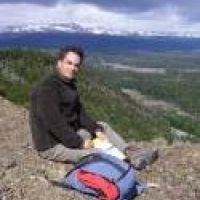Wilson et al., 2018
The Intensively Managed Landscape Critical Zone Observatory: A Scientific Testbed for Understanding Critical Zone Processes in Agroecosystems
Wilson, C.G., Abban, B., Keefer, L.L., Wacha, K., Dermisis, D., Giannopoulos, C., Zhou, S., Goodwell, A.E., Woo, D.K., Yan, Q., Ghadiri, M., Stumpf, A., Pitcel, M., Lin, Y-F, Marini, L., Storsved, B., Goff, K., Vogelgesang, J., Dere, A., Schilling, K.E., Muste, M., Blair, N.E., Rhoads, B., Bettis, A., Pai, H., Kratt, C., Sladek, C., Wing, M., Selker, J., Tyler, S., Lin, H., Kumar, P., and Papanicolaou, A.N. (2018)
Vadose Zone Journal
-
IML, INVESTIGATOR
-
IML, GRAD STUDENT
-
IML, INVESTIGATOR
-
IML, GRAD STUDENT
-
IML, GRAD STUDENT
-
IML, GRAD STUDENT
-
IML, GRAD STUDENT
-
IML, STAFF
-
IML, INVESTIGATOR
-
IML, INVESTIGATOR
-
IML, STAFF
-
IML, GRAD STUDENT
-
Shale Hills, INVESTIGATOR, COLLABORATOR
-
IML, INVESTIGATOR
-
IML, INVESTIGATOR
-
IML, INVESTIGATOR
-
IML, INVESTIGATOR
-
IML, Shale Hills, INVESTIGATOR
-
IML, INVESTIGATOR
-
IML, INVESTIGATOR
Abstract
In intensively managed landscapes, interactions between surface (tillage) and subsurface (tile drainage) management with prevailing climate/weather alter landscape characteristics, transport pathways, and transformation rates of surface/subsurface water, soil/sediment, and particulate/dissolved nutrients. To capture the high spatial and temporal variability of constituent transport and residence times in the critical zone (between the bedrock and canopy) of these altered landscapes, both storm event and continuous measurements are needed. The Intensively Managed Landscapes Critical Zone Observatory (IML-CZO) is comprised of three highly characterized, well instrumented, and representative watersheds (i.e., Clear Creek, Iowa; Upper Sangamon River, Illinois; and Minnesota River, Minnesota). It is organized to quantify the heterogeneity in structure and dynamic response of critical zone processes to human activities in the context of the glacial and management (anthropogenic) legacies. Observations of water, sediment, and nutrients are made at nested points of the landscape in the vertical and lateral directions during and between storm events (i.e., continuously). The measurements and corresponding observational strategy are organized as follows. First, reference measurements from surface soil and deep core extractions, geophysical surveys, lidar, and hyperspectral data, which are common across all Critical Zone Observatories, are available. The reference measurements include continuous quantification of energy, water, solutes, and sediment fluxes. The reference measurements are complemented with event-based measurements unique to IML-CZO. These measurements include water table fluctuations, enrichment ratios, and roughness as well as bank erosion, hysteresis, sediment sources, and lake/floodplain sedimentation. The coupling of reference and event-based measurements support testing of the central hypothesis (i.e., system shifts from transformer to transporter in IML-CZO due to the interplay between management and weather/climate). Data collected since 2014 are available through a data repository and through the Geodashboard interface, which can be used for process-based model simulations.
Citation
Wilson, C.G., Abban, B., Keefer, L.L., Wacha, K., Dermisis, D., Giannopoulos, C., Zhou, S., Goodwell, A.E., Woo, D.K., Yan, Q., Ghadiri, M., Stumpf, A., Pitcel, M., Lin, Y-F, Marini, L., Storsved, B., Goff, K., Vogelgesang, J., Dere, A., Schilling, K.E., Muste, M., Blair, N.E., Rhoads, B., Bettis, A., Pai, H., Kratt, C., Sladek, C., Wing, M., Selker, J., Tyler, S., Lin, H., Kumar, P., and Papanicolaou, A.N. (2018): The Intensively Managed Landscape Critical Zone Observatory: A Scientific Testbed for Understanding Critical Zone Processes in Agroecosystems. Vadose Zone Journal. DOI: 10.2136/vzj2018.04.0088
 This Paper/Book acknowledges NSF CZO grant support.
This Paper/Book acknowledges NSF CZO grant support.
Explore Further




















